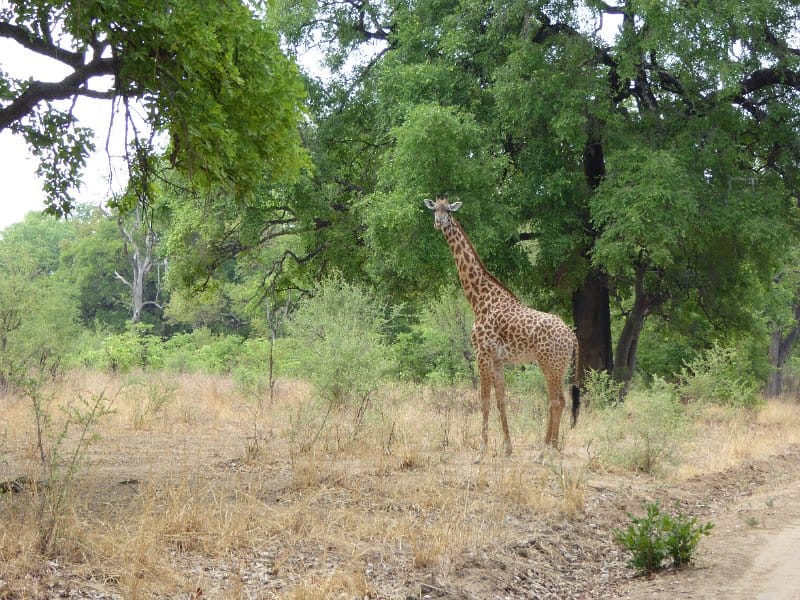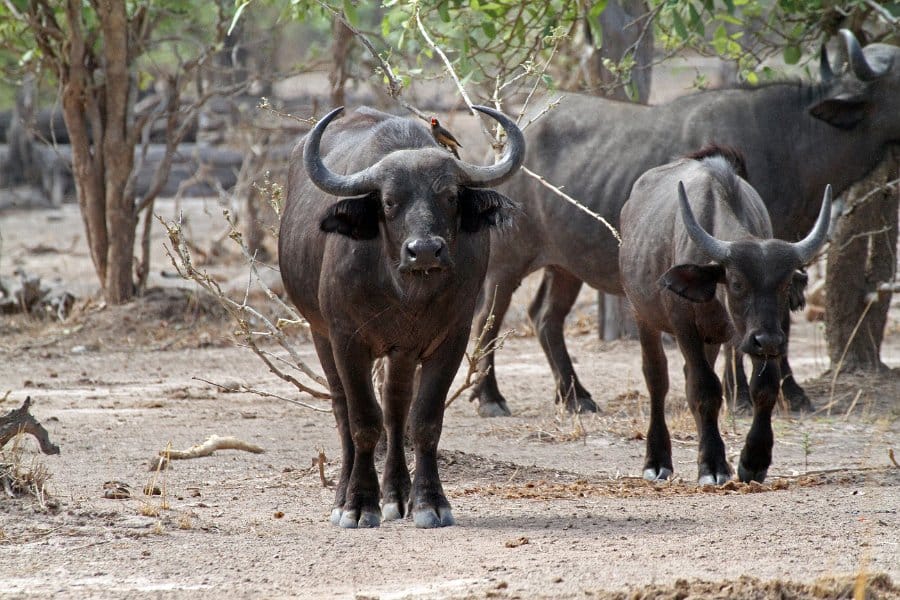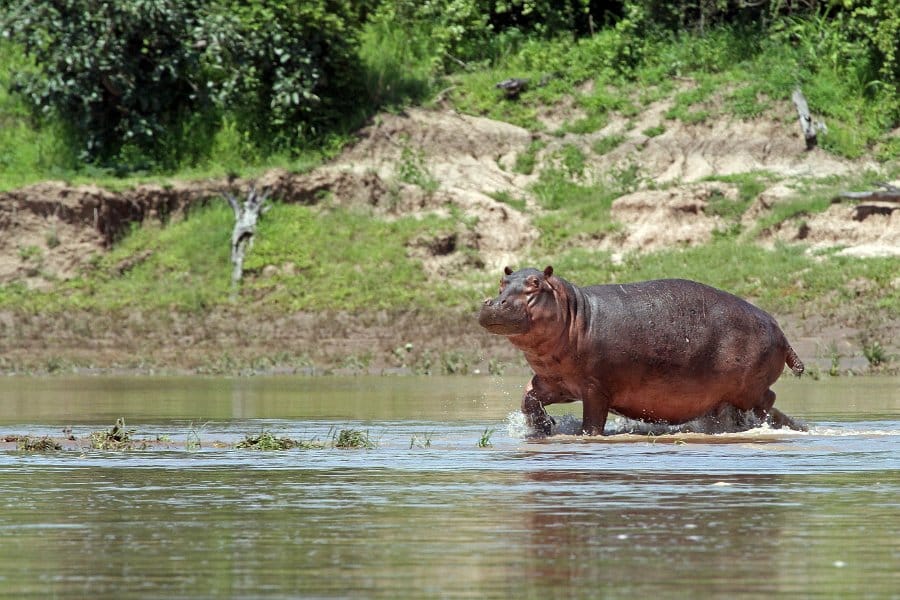Luambe National Park: Discover Zambia’s untouched wilderness
The Luambe National Park is a natural biodiversity oasis hidden away in the depths of the Luangwa Valley in Zambia. This park is not as popular as its neighbouring counterparts like South Luangwa, but ecologically and conservationally significant. Luambe is a sanctuary of diverse wildlife, wild nature and conservation-oriented tourism making it a destination worth visiting by the ethically-conscious visitor.
- Luambe National Park location
- Ecological and historical significance
- Luambe National Park animals
- Luambe National Park activities
- Luambe Camp: The heart of hospitality
- Entry requirements and park permits
- Health and safety guidelines
- What to pack: Essential safari gear
- Best time to visit Luambe National Park
- How to plan your visit
- FAQs
- Conclusion

Birdsong, hippos and wild silence - only in Luambe National Park
Luambe National Park location
Geographic coordinates and terrain
Luambe National Park is also strategically positioned in the Eastern Province of Zambia in the Luangwa River Valley. It is located in the range of 11°28′S and 31°11′E latitude and longitude respectively and is located between North and South Luangwa National Parks. The topography is made up of riparian forests, mopane woodlands and grassy plains, which provide a dynamic habitat to the wildlife.
Accessibility and proximity to major cities
Luambe is isolated but can be reached by domestic flight to Mfuwe Airport with a subsequent 4-5 hours overland trip. The isolation is a factor that contributes significantly to the maintenance of its untouched beauty, which is the reason why people visit it in search of undistorted African wilderness free of business intrusions.
Ecological and historical significance
The Park’s legacy and conservation timeline
Luambe National Park was founded in the 1930s and is among the oldest conservation areas in Zambia. Unluckily, its potential was long marred by decades of underfunding and poaching. But with the 1990s, a new tide of community-led conservation efforts and the inclusion of private partners has assisted in restoring its ecological stability.
Role in the Luangwa Valley Ecosystem
Luambe is a vital wildlife corridor between North and South Luangwa National Parks. It is situated on the Luangwa River, which increases biodiversity and seasonal migration. The park is part of the Luangwa Valley Biosphere Reserve, a UNESCO-recognized conservation landscape.
Luambe National Park animals
Mammals: From Elephants to Crawshay’s Zebras
Luambe National Park has a variety of mammalian fauna. The visitor is likely to see African elephants, Cookson wildebeest, Crawshay’s zebra, leopard and even lion. This has a good antelope population consisting of impalas, bushbucks and pukus since only minimum interference is done by humans.
Avian diversity and rare bird species
For ornithologists, Luambe is a paradise. Over 200 bird species have been recorded, including Pel’s fishing owl, African skimmers and southern ground hornbills. The park’s riverine habitats are particularly rich in waterfowl and migratory birds, offering exceptional birdwatching year-round.
Reptiles and aquatic life
The Luangwa River provides refuge for Nile crocodiles and hippopotamuses. The riverbanks and oxbow lagoons also support a wide range of amphibians and fish, contributing to the park’s robust food web.

Giraffes roam freely in Luambe National Park - grace in every step
Luambe National Park activities
Game drives and walking safaris
The major means of exploring Luambe is by guided game drives and walking safaris. These are run under stringent environmental guidelines keeping the effects on the environment as minimal as possible. Walking safaris are especially interesting, since they are led by armed, certified guides who study the behavior of animals and bushcraft.
Birdwatching opportunities
Birdwatching is a gratifying experience owing to the quiet environment and the absence of mass tourism. Rare birds are also easily seen by guests in their lodges or as they take morning and evening walks along the riverbanks.
Cultural interactions and conservation tours
Tourists are also advised to join conservation education activities as well as visit the community projects around the area. These interactions give a clue about symbiotic relationships between local communities and wildlife protection initiatives.

Explore Zambia’s hidden gem - Luambe National Park is calling
Luambe Camp: The heart of hospitality
Eco-friendly accommodation and facilities
The most luxurious lodge in the park is the Luambe Camp where sustainable luxury in the wilderness can be enjoyed. It is operated under the strict principles of eco-tourism since it operates on solar energy, it uses biodegradable products and follows the zero-waste policy. The camp is made up of large tents with en-suite facilities and are strategically positioned to give a 360 degree view of the Luangwa River.
Guided excursions and educational programs
Luambe Camp visitors have the advantage of having exclusive access to wildlife tracking sessions, expert-guided safaris and conservation workshops. The camp also participates in continuous anti-poaching activities and biodiversity surveillance, which enables tourists to help in conservation directly.
Entry requirements and park permits
Any foreigner who comes to Zambia on a tourism visa should adhere to the Zambian Immigration and Deportation Act, 2010. The majority of foreign citizens can receive a tourist visa on arrival or prior to their trip by using the Zambia eVisa system. It is obligatory to have a valid passport of at least six months.
Also, a daily conservation and park entry fee is paid by all visitors to Luambe National Park, which is controlled by the Department of National Parks and Wildlife (DNPW). These fees are usually charged in US Dollars and they can also depend on the nationality. Travelers who want to practice professional photography, filming or research may require to obtain other permits from the authorities in advance.
Health and safety guidelines
Luambe National Park is located in a malaria-prone area and visitors are advised to consult a doctor on malaria prophylaxis prior to travel. Yellow Fever, Typhoid and Hepatitis A vaccinations are highly advised.
There are few medical establishments in the immediate surrounding of the park. Fully equipped medical facilities are available several hours drive away in Mfuwe or Chipata. Thus, it is recommended to bring a personal health kit, sufficient travel insurance including evacuation cover and to inform the lodge staff about any chronic diseases on arrival.
Tourists should follow all safety briefings during safaris to the letter. It is a strict no to walking without a certified guide or getting close to wild animals. It is required by the laws of wildlife safety in Zambia to follow the instructions of the rangers.

Watch buffalo herds gather at dusk in Luambe National Park
What to pack: Essential safari gear
The park is remote and its climatic conditions suggest that visitors bring their packing. The safari dressings must include lightweight, breathable and neutral-colored attires that could be worn during the day or night when it is cold. High SPF sunscreen and UV-rated sunglasses are also prescribed.
When it comes to walking safaris, hiking boots that have closed toes, insect repellent and a refillable bottle of water are required. Visitors who are birdwatchers or photographers can carry a camera and binoculars with zoom lens.
Since the park has limited electricity, a solar charger or power bank will be very useful to ensure that vital gadgets are charged during the visit.
Best time to visit Luambe National Park
The dry season is the best time to visit Luambe, that is, between June and October. It is during this period that the wildlife is concentrated in and around water bodies and is more likely to be seen. The rainy season (November - March) renders roads impracticable and the park is closed to tourists.
How to plan your visit
Travelers should coordinate with licensed tour operators, especially those affiliated with Luambe Camp, for transportation and permits. It's advisable to:
- Book flights to Mfuwe or Chipata
- Confirm road transfer availability based on seasonal conditions
- Acquire Yellow Fever certificates and consult health advisories
- Carry USD for park entry fees and other services
FAQs
- Where is Luambe National Park located?
Luambe National Park is located in Zambia’s Eastern Province, between North and South Luangwa National Parks, within the Luangwa River Valley.
- What animals can I see in Luambe National Park?
You can spot elephants, leopards, lions, zebras, hippos, crocodiles and over 200 bird species including Pel’s fishing owl and African skimmers.
- What activities are available in Luambe National Park?
The park offers game drives, walking safaris, birdwatching, cultural tours and conservation-focused excursions.
- What is Luambe Camp?
Luambe Camp is the park’s eco-lodge that provides sustainable, solar-powered accommodation and guided safaris, with a focus on conservation.
- When is the best time to visit Luambe National Park?
The best time to visit is during the dry season from June to October, when wildlife sightings are most frequent and roads are accessible.

Meet the mighty hippos of Luambe National Park at sunset
Conclusion
An example of how fragile ecosystems can be maintained by small-scale ethical conservation tourism is the Luambe National Park. It is a crucial tourist attraction to those environment-conscious tourists because of its richness in flora and fauna, augmented by the cultural value and its peaceful seclusion. Whether it is tracking elephants, rare bird watching or simply soaking in solitude, Luambe will give you the most memorable experience on a legal, respectful and sustainable platform.
Related Articles
- Air Charter Zambia: Tourist guide to flights, safaris & transfers
- Ngonye Falls: Zambia’s natural beauty and cultural heritage
- Luambe National Park: Discover Zambia’s untouched wilderness
- Lavushi Manda National Park: Zambia’s hidden gem
- Sioma Ngwezi National Park: Wildlife and travel guide in Zambia
- Zambia eVisa (online visa) or visa on arrival: Key differences
- Barotse Floodplain: Importance of Zambia’s seasonal wetland
- Angel’s Pool Zambia: Experience Victoria Falls up close
- Nyege Nyege festival: East Africa’s music and arts celebration




